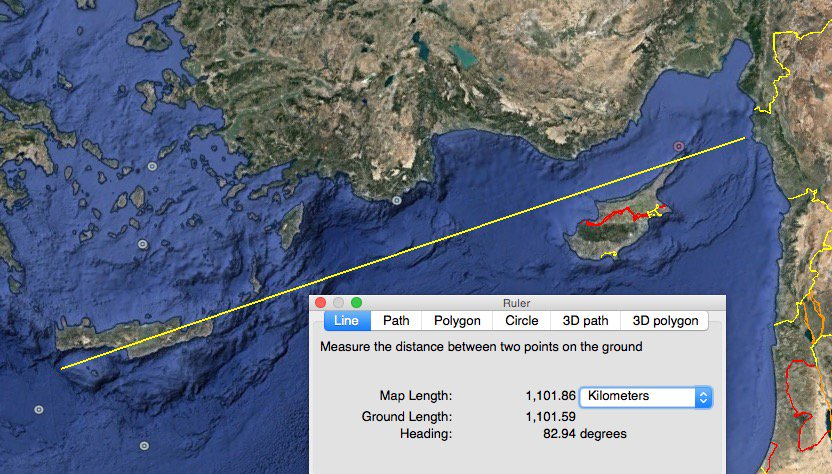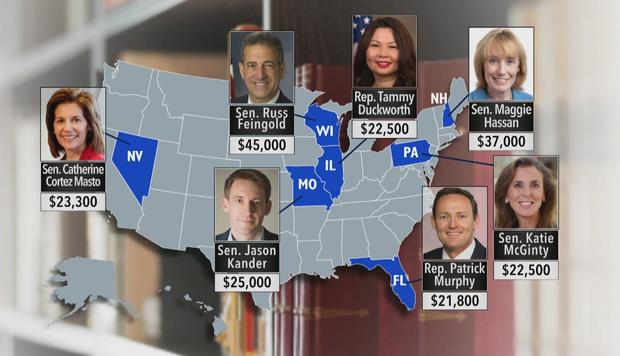We cant predict who will be part of her cabinet staff, but given those who worked in the White House during Bill Clinton’s administration and now for the Hillary campaign, you can bet it will be similar chaos and creepy people.
So, given those that are part of Hillary’s public campaign team and her clandestine operations team let us examine some names and the additional histories of these people. Note, how these people are recycled from decades of socialist political beltway occupation.
****
In April of 2015 a list of people was cultivated by Politico: Hillary Clinton has used her extensive Rolodex and front-runner status to assemble a who’s who of power brokers for her fledgling campaign.
The vast political network contains an important mix — veteran Clinton allies with intimate knowledge of her strengths and weaknesses, and newcomers from President Barack Obama’s orbit well aware of how he was able to triumph over her in 2008.
The campaign is seen as having pulled off a successful launch of her campaign in mid-April, using a digital blitz to re-introduce Clinton as an advocate for Americans trying to improve their economic and social standing.
Now that Clinton is officially a presidential candidate, the core group of dozens of staffers will operate out of two full floors at 1 Pierrepont Plaza in Brooklyn Heights, her new campaign headquarters. The more polished apparatus will help Clinton’s advisers as they cultivate Clinton’s persona as an appealing candidate in tune with middle-class priorities, while trying to contain controversies, including her use of a personal email server while she was secretary of state and the foreign money that has flowed to the Clinton Foundation.
Here’s a guide to this cycle’s Clinton power map. Though not a comprehensive list, it’s a look at the most influential players in her 2016 presidential campaign.
THE CAMPAIGN
 • John Podesta, the trusted aide to both Bill Clinton and Obama, is campaign chairman. Podesta has had close ties to the Clintons for years: He was former President Clinton’s chief of staff in the White House and later the founder of the Center for American Progress, a liberal think tank that is home to plenty of Clinton allies, including Neera Tanden, a longtime Hillary Clinton confidante and the president of CAP. Podesta is also well-regarded in Obama’s orbit: He stepped down earlier this year as counselor to Obama and previously led his 2008 transition team. His presence could help integrate longtime Clinton allies and newer former Obama staffers, and he is often described as the “adult in the room.”
• John Podesta, the trusted aide to both Bill Clinton and Obama, is campaign chairman. Podesta has had close ties to the Clintons for years: He was former President Clinton’s chief of staff in the White House and later the founder of the Center for American Progress, a liberal think tank that is home to plenty of Clinton allies, including Neera Tanden, a longtime Hillary Clinton confidante and the president of CAP. Podesta is also well-regarded in Obama’s orbit: He stepped down earlier this year as counselor to Obama and previously led his 2008 transition team. His presence could help integrate longtime Clinton allies and newer former Obama staffers, and he is often described as the “adult in the room.”
 • Robby Mook, the Democratic operative who steered close Clinton friend and 2016 booster Terry McAuliffe to victory in the 2013 Virginia governor’s race, is campaign manager. Mook, in his mid-30s, is known for a calm, measured demeanor, an aversion to the spotlight and an interest in data. He worked for Clinton’s 2008 presidential bid, helping her win in Nevada, Ohio and Indiana during the Democratic primary, and has also served as executive director of the Democratic Congressional Campaign Committee.
• Robby Mook, the Democratic operative who steered close Clinton friend and 2016 booster Terry McAuliffe to victory in the 2013 Virginia governor’s race, is campaign manager. Mook, in his mid-30s, is known for a calm, measured demeanor, an aversion to the spotlight and an interest in data. He worked for Clinton’s 2008 presidential bid, helping her win in Nevada, Ohio and Indiana during the Democratic primary, and has also served as executive director of the Democratic Congressional Campaign Committee.
 • Joel Benenson, who was Obama’s pollster — and helped him hone his message against Clinton in 2008 — is on board as Clinton’s chief strategist and pollster.
• Joel Benenson, who was Obama’s pollster — and helped him hone his message against Clinton in 2008 — is on board as Clinton’s chief strategist and pollster.
• John Anzalone and David Binder will work with Benenson as top pollsters; Anzalone may focus on early states. Both are also alums of Obama’s orbit.
 • Jim Margolis, who also worked for Obama, serving as a senior adviser to him in 2012, is Clinton’s media adviser. He has also been a consultant for a host of Democratic senators, including outgoing Senate Minority Leader Harry Reid of Nevada.
• Jim Margolis, who also worked for Obama, serving as a senior adviser to him in 2012, is Clinton’s media adviser. He has also been a consultant for a host of Democratic senators, including outgoing Senate Minority Leader Harry Reid of Nevada.
• Tony Carrk, formerly of the CAP action fund, is set to direct research.
• Marlon Marshall, an influential Obama White House aide, is expected to be Clinton’s director of state campaigns and political engagement.
 • Jennifer Palmieri, formerly the White House communications director, will take on the same role for the Clinton campaign. She also has previous ties to the Clintons: She worked in the Clinton White House and at CAP.
• Jennifer Palmieri, formerly the White House communications director, will take on the same role for the Clinton campaign. She also has previous ties to the Clintons: She worked in the Clinton White House and at CAP.
• Charlie Baker, a veteran Democratic strategist, is chief administrative officer and is an influential voice in Clinton’s orbit.
• Marc Elias will be general counsel to the campaign. He chairs the political law practice at the prominent law firm Perkins Coie and also served as general counsel to John Kerry’s 2004 presidential campaign.
 • Amanda Renteria, a former Democratic candidate for Congress in California and the Senate’s first Latina chief of staff — she worked for Sen. Debbie Stabenow (D-Mich.) — is expected to serve as political director. Brynne Craig, who was McAuliffe’s political director and more recently Clinton’s scheduler, may be tapped as deputy political director.
• Amanda Renteria, a former Democratic candidate for Congress in California and the Senate’s first Latina chief of staff — she worked for Sen. Debbie Stabenow (D-Mich.) — is expected to serve as political director. Brynne Craig, who was McAuliffe’s political director and more recently Clinton’s scheduler, may be tapped as deputy political director.
• Dennis Cheng, who previously served as chief development officer at the Clinton Foundation, is expected to be finance director. Other key players in Clinton’s orbit with ties to the foundation include Craig Minassian, the foundation’s chief communications officer, and Kamyl Bazbaz, daughter Chelsea Clinton’s chief spokesman.
• Garry Gensler, a former Commodity Futures Trading Commission chairman, is chief financial officer. Gensler is a former Goldman Sachs executive who has also worked to regulate Wall Street, a balance that may be helpful for Clinton, who enjoys support from many wealthy Wall Street donors, but who is also seeking to strike a populist note on economics.
• Mandy Grunwald, a longtime Clinton ally who worked on Clinton’s 2008 campaign as well as for Bill Clinton during both his campaign and administration, will be a senior media consultant.
INNER CIRCLE
 • Huma Abedin, one of Hillary Clinton’s top aides, is deeply trusted and highly influential in Clinton’s orbit and is vice chairwoman of the campaign.
• Huma Abedin, one of Hillary Clinton’s top aides, is deeply trusted and highly influential in Clinton’s orbit and is vice chairwoman of the campaign.
• Cheryl Mills has worked for the Clintons for years, from the White House to the State Department to the Clinton Foundation. She was general counsel to Hillary Clinton’s 2008 campaign, and regardless of whether there’s ultimately an official title on the campaign, hers will be a key voice.
• Jake Sullivan is a senior policy adviser on the campaign and previously served as a deputy policy director on Clinton’s 2008 presidential campaign. He was also a critical player on her State Department team. He recently gained a higher profile for his role in facilitating the groundwork for a preliminary nuclear deal with Iran. Clinton’s two other senior policy advisers, who along with Sullivan are helping to shape the campaign’s agenda, are Maya Harris, formerly of CAP, who has a specialty in human rights, and Ann O’Leary, who was Clinton’s legislative director when she was in the Senate and has expertise in early childhood education.
 • It’s unclear what role Bill Clinton will play in his wife’s campaign, but he is clearly a prominent voice, could be a major asset to her and brings with him a cadre of friends and advisers.
• It’s unclear what role Bill Clinton will play in his wife’s campaign, but he is clearly a prominent voice, could be a major asset to her and brings with him a cadre of friends and advisers.
• Other trusted voices in Clinton’s orbit, who may not have official roles in the campaign, include Philippe Reines, Clinton’s former spokesman and a fiercely loyal aide; Neera Tanden at CAP; Tom Nides, the Morgan Stanley executive who was Clinton’s deputy secretary of state; and Minyon Moore at the Dewey Square Group.
COMMUNICATIONS
• Kristina Schake, a former top aide to first lady Michelle Obama, will be deputy communications director.
• Brian Fallon is set to be national press secretary after working as a top spokesman at the Department of Justice and for Sen. Chuck Schumer (D-N.Y.).
• Nick Merrill, who worked with Clinton at the State Department and has been shepherding the Clinton team’s day-to-day press interactions since Clinton left Foggy Bottom, will serve as traveling press secretary. He was most recently working in her private office with a handful of other staffers, including Dan Schwerin, a Clinton speechwriter who played a key role in facilitating Clinton’s most recent memoir, “Hard Choices.”
 • Karen Finney, who most recently was an MSNBC host and previously worked for both Clintons, will be a senior spokeswoman and a strategic communications adviser.
• Karen Finney, who most recently was an MSNBC host and previously worked for both Clintons, will be a senior spokeswoman and a strategic communications adviser.
• Jesse Ferguson, formerly a spokesman for the DCCC in Washington, will manage daily press interactions and also be a national press secretary. Other D.C. figures, including Tyrone Gayle from the DCCC and Ian Sams and Rebecca Chalif of the Democratic National Committee, are also expected to be involved in communications. Also expected to be involved, likely in a rapid-response capacity, are Josh Schwerin, formerly of the DCCC and the McAuliffe campaign; Jesse Lehrich of American Bridge; and Adrienne Elrod, who previously handled media at the pro-Clinton super PAC Correct the Record. Oren Shur, previously of the Democratic Governors Association, will handle paid media. In the states, Lily Adams will be playing a key role in Iowa communications; Harrell Kirstein will do the same in New Hampshire.
DIGITAL
• Teddy Goff, who led Obama’s digital operation, is expected to be a top digital adviser. Like Goff, Andrew Bleeker, another Obama digital alum, may also consult from the outside.
• Stephanie Hannon, a former Google executive, is chief technology officer.
• Katie Dowd, who worked for Clinton at the State Department and Clinton Foundation, is set to be digital director.
• Jenna Lowenstein will be deputy digital director. She was previously vice president of digital engagement at EMILY’s List.
GROUND GAME
 • Adam Parkhomenko, the founder and executive director of Ready for Hillary — the super PAC that spent about two years urging her to enter the race — will be director of grassroots engagement. Look for other Ready for Hillary allies and alums to have roles in the campaign as well. Harold Ickes and Tracy Sefl, longtime Democratic operatives who were involved with Ready for Hillary, are also expected to have ties to the campaign in some capacity.
• Adam Parkhomenko, the founder and executive director of Ready for Hillary — the super PAC that spent about two years urging her to enter the race — will be director of grassroots engagement. Look for other Ready for Hillary allies and alums to have roles in the campaign as well. Harold Ickes and Tracy Sefl, longtime Democratic operatives who were involved with Ready for Hillary, are also expected to have ties to the campaign in some capacity.
• Jeremy Bird and Mitch Stewart, who helped spearhead Obama’s 2012 field and in-state efforts, are expected to advise Clinton as outside consultants.
IOWA
• Leaders of the Clinton effort in the Hawkeye State include Matt Paul, a veteran Iowa Democratic operative who is set to manage her Iowa effort; Michael Halle, who was a top adviser on McAuliffe’s team; Troy Price, who has been brought on to do political work; and Michelle Kleppe, an Obama campaign alum who will run the field operation.
NEW HAMPSHIRE
• In the Granite State, Mike Vlacich, who led New Hampshire Sen. Jeanne Shaheen’s 2014 reelection campaign, will be state director. Kari Thurman, who was Shaheen’s political director, is also expected to be on board, among other hires.
NEVADA
• Emmy Ruiz, who ran general election operations for Obama in Nevada in 2012 and who worked there for Clinton in the 2008 primary, is expected to again play a leading role in Nevada for Clinton in 2016.
SUPERPACs
• Jim Messina and Buffy Wicks, top former Obama operatives, are running Priorities USA Action, a liberal super PAC that was created to boost Obama in 2012 and is now dedicated to Clinton. Along with Messina, former Michigan Gov. Jennifer Granholm is also a co-chairman. Jonathan Mantz, a longtime Clinton ally, is the organization’s senior finance adviser. He was Clinton’s 2008 finance director.
• David Brock is the founder of American Bridge, a Democratic super PAC. Within Bridge, Burns Strider runs Correct the Record, the rapid response-focused arm.
*****
Deeper dive on some of her team:
Podesta: Received his J.D. from Georgetown University Law Center in 1976. Podesta worked as a trial attorney for the Department of Justice’s Honors Program in the Land and Natural Resources Division (1976–77), and as a Special Assistant to the Director of ACTION, the Federal volunteer agency (1978–1979). His political career began in 1972, when he worked for George McGovern’s presidential campaign, which lost in 49 states. Podesta held positions on Capitol Hill, including Counselor to Democratic Leader Senator Thomas Daschle (1995–1996); Chief Counsel for the Senate Agriculture Committee (1987–1988); Chief Minority Counsel for the United States Senate Judiciary Subcommittee on Patents, Copyrights, and Trademarks; Security and Terrorism; and Regulatory Reform; and Counsel on the Majority Staff of the Senate Judiciary Committee (1979–1981). In 1988, he and his brother Tony co-founded Podesta Associates, Inc., a Washington, D.C., “government relations and public affairs” lobbying firm. Now known as the Podesta Group, the firm “has close ties to the Democratic Party and the Obama administration [and] has been retained by some of the biggest corporations in the country, including Wal-Mart, BP and Lockheed Martin. FBI Director James Comey was also the top lawyer of record for Lockheed Martin.
Mook: In 2013, Mook left the DCCC and was named the campaign manager of Terry McAuliffe’s gubernatorial campaign. That year, Politico named Mook one of their “50 Politicos to Watch.” Mook led McAuliffe’s campaign to victory. In January 2015, Clinton hired Mook and Joel Benenson as strategists
Marshall: He was a White House liaison to the State Department in 2009 before joining the Democrats’ congressional campaign committee, and later the president’s reelection campaign before a return stint at the White House.
Palmieri: Served as the president of the Center for American Progress Action Fund and was the White House chief of staff for Leon Panetta.
Cheng: Formerly chief of protocol at the State Department, graduate of the London School of Economics and worked the databases for the Clinton Foundation and the State Department for the richest zip codes for individual and corporate fundraising and donations.
Mills: Founded her own company Black Ivy Group, building business in Africa. She was part of the defense team for Bill Clinton during his impeachment and was the representative for the Interim Haiti Recovery Commission.
Tanden: Worked with Hillary on Hillarycare and later for Kathleen Sebelius to pass Obamacare. She is anti Israel and former president of the Center for American Progress.
Bird: Worked for Howard Dean and John Kerry campaigns and served for Obama on his Organizing for America campaign. Jeremy also founded Battleground Texas, an operation to change the political landscape in the State moving it from a red state to a purple or blue state. He also launched V15 the wide and international mission and well funded operation to unseat Prime Minister Netanyahu.
Wicks: Worked with Code Pink, ANSWER and coordinated with United Farm Workers of America teaching Alinsky tactics to campaign workers.
Brock: Founder of Media Matters for America but early in his career he earned the mantle of political assassin for TrooperGate and Anita Hill. He later changed sides and became a paid confidant for Sidney Blumenthal and is a happy recipient of George Soros money. American Democracy Legal Fund, launched by Brock is a funded organization to file constant lawsuits against Republicans on accusatory violations of campaign finance fraud and ethics violations.





